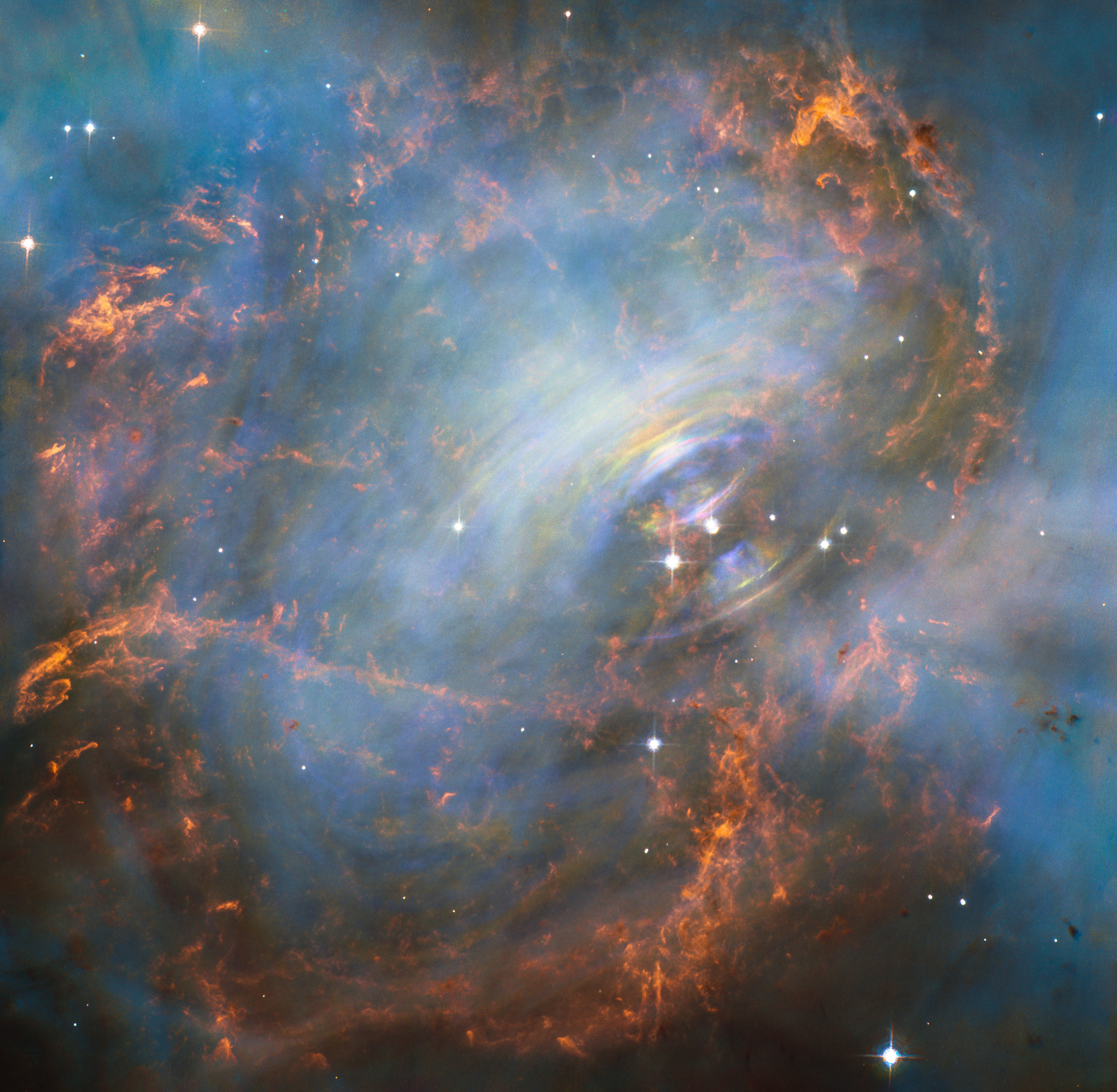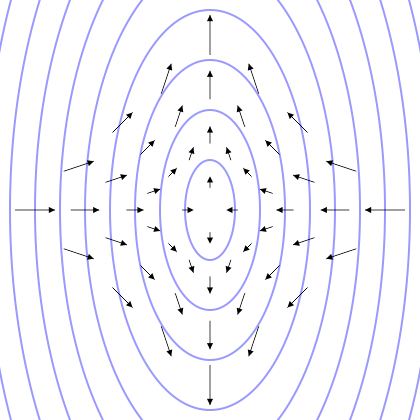|
GW170817
GW170817 was a gravitational wave (GW) observed by the LIGO and Virgo detectors on 17 August 2017, originating within the shell elliptical galaxy NGC 4993, about 144 million light years away. The wave was produced by the last moments of the inspiral of a binary pair of neutron stars, ending with their merger. , it is the only GW detection to be definitively correlated with any electromagnetic observation. Unlike the five prior GW detections—which were of merging black holes and thus not expected to have detectable electromagnetic signals—the aftermath of this merger was seen across the electromagnetic spectrum by 70 observatories on 7 continents and in space, marking a significant breakthrough for multi-messenger astronomy. The discovery and subsequent observations of GW170817 were given the Breakthrough of the Year award for 2017 by the journal ''Science''. GW170817 had an audible duration of approximately 100 seconds and exhibited the characteristic intensity an ... [...More Info...] [...Related Items...] OR: [Wikipedia] [Google] [Baidu] |
NGC 4993
NGC 4993 (also catalogued as NGC 4994 in the New General Catalogue) is a lenticular galaxy located about 140 million light-years away in the constellation Hydra (constellation), Hydra. It was discovered on 26 March 1789 by William Herschel and is a member of the NGC 4993 Group. NGC 4993 was the site of GW170817, a neutron star merger, collision of two neutron stars, the first astronomical event detected in both electromagnetic and gravitational radiation, a discovery given the Breakthrough of the Year award for 2017 by the journal Science (journal), ''Science''. Detecting a gravitational wave event associated with the gamma-ray burst provided direct confirmation that binary neutron star collisions produce short gamma-ray bursts. Physical characteristics NGC 4993 has several concentric shells of stars and a large dust lane—with a diameter of approximately a few kiloparsecs—which surrounds the nucleus and is stretched out into an "s" shape. The dust lane appears to be connec ... [...More Info...] [...Related Items...] OR: [Wikipedia] [Google] [Baidu] |
Neutron Star Merger
A neutron star merger is the stellar collision of neutron stars. When two neutron stars fall into mutual orbit, they gradually inspiral, spiral inward due to the loss of energy emitted as gravitational radiation. When they finally meet, their merger leads to the formation of either a more massive neutron star, or—if the mass of the remnant exceeds the Tolman–Oppenheimer–Volkoff limit—a black hole. The merger can create a magnetic field that is trillions of times stronger than that of Earth in a matter of one or two milliseconds. The immediate event creates a gamma-ray burst#Short gamma-ray bursts, short gamma-ray burst visible over hundreds of millions, or even billions of light years. The merger of neutron stars momentarily creates an environment of such extreme neutron flux that the r-process, ''r''-process can occur. This reaction accounts for the nucleosynthesis of around half of the isotopes in elements heavier than iron. The mergers also produce kilonovae, which ar ... [...More Info...] [...Related Items...] OR: [Wikipedia] [Google] [Baidu] |
Neutron Star
A neutron star is the gravitationally collapsed Stellar core, core of a massive supergiant star. It results from the supernova explosion of a stellar evolution#Massive star, massive star—combined with gravitational collapse—that compresses the core past white dwarf star density to that of Atomic nucleus, atomic nuclei. Surpassed only by black holes, neutron stars are the second smallest and densest known class of stellar objects. Neutron stars have a radius on the order of and a mass of about . Stars that collapse into neutron stars have a total mass of between 10 and 25 solar masses (), or possibly more for those that are especially rich in Metallicity, elements heavier than hydrogen and helium. Once formed, neutron stars no longer actively generate heat and cool over time, but they may still evolve further through Stellar collision, collisions or Accretion (astrophysics), accretion. Most of the basic models for these objects imply that they are composed almost entirely o ... [...More Info...] [...Related Items...] OR: [Wikipedia] [Google] [Baidu] |
Kilonova
A kilonova (also called a macronova) is a transient astronomical event that occurs in a compact star, compact binary system when two neutron stars (BNS) or a neutron star and a black hole collide. The kilonova, visible over the weeks and months following the merger, is an isotropically expanding luminous afterglow of electromagnetic radiation emitted by the radioactive decay of r-process, ''r''-process nuclei synthesized by—and then ejected from—the initial cataclysmic event. The high sphericity of kilonovae through its early epochs was deduced from the blackbody nature of the spectrum observed for the most important recorded neutron star merger, BNS merger, GW170817, GW170817/AT2017gfo. History The existence of thermal transient events from neutron star mergers was first introduced by Li & Bohdan Paczyński, Paczyński in 1998. The radioactive glow arising from the merger ejecta was originally called mini-supernova, as it is to the brightness of a typical supernova, t ... [...More Info...] [...Related Items...] OR: [Wikipedia] [Google] [Baidu] |
Virgo Interferometer
The Virgo interferometer is a large-scale scientific instrument near Pisa, Italy, for detecting gravitational waves. The detector is a Michelson interferometer, which can detect the minuscule length variations in its two arms induced by the passage of gravitational waves. The required precision is achieved using many systems to isolate it from the outside world, including keeping its mirrors and instrumentation in an ultra-high vacuum and suspending them using complex systems of Pendulum, pendula. Between its periodic observations, the detector is upgraded to increase its sensitivity. The observation runs are performed in collaboration with other similar detectors, including the two Laser Interferometer Gravitational-Wave Observatories (LIGO) in the United States and the Japanese Kamioka Gravitational Wave Detector (KAGRA), because cooperation between several detectors is crucial for detecting gravitational waves and pinpointing their origin. Virgo was conceived and built whe ... [...More Info...] [...Related Items...] OR: [Wikipedia] [Google] [Baidu] |
Gravitational Wave
Gravitational waves are oscillations of the gravitational field that Wave propagation, travel through space at the speed of light; they are generated by the relative motion of gravity, gravitating masses. They were proposed by Oliver Heaviside in 1893 and then later by Henri Poincaré in 1905 as the gravitational equivalent of Electromagnetic radiation, electromagnetic waves. In 1916, Albert Einstein demonstrated that gravitational waves result from his general theory of relativity as ripples in spacetime. Gravitational waves transport energy as gravitational radiation, a form of radiant energy similar to electromagnetic radiation. Newton's law of universal gravitation, part of classical mechanics, does not provide for their existence, instead asserting that gravity has instantaneous effect everywhere. Gravitational waves therefore stand as an important relativistic phenomenon that is absent from Newtonian physics. Gravitational-wave astronomy has the advantage that, unlike elec ... [...More Info...] [...Related Items...] OR: [Wikipedia] [Google] [Baidu] |
Black Hole
A black hole is a massive, compact astronomical object so dense that its gravity prevents anything from escaping, even light. Albert Einstein's theory of general relativity predicts that a sufficiently compact mass will form a black hole. The boundary (topology), boundary of no escape is called the event horizon. A black hole has a great effect on the fate and circumstances of an object crossing it, but has no locally detectable features according to general relativity. In many ways, a black hole acts like an ideal black body, as it reflects no light. Quantum field theory in curved spacetime predicts that event horizons emit Hawking radiation, with thermal radiation, the same spectrum as a black body of a temperature inversely proportional to its mass. This temperature is of the Orders of magnitude (temperature), order of billionths of a kelvin for stellar black holes, making it essentially impossible to observe directly. Objects whose gravitational fields are too strong for ... [...More Info...] [...Related Items...] OR: [Wikipedia] [Google] [Baidu] |
Short Gamma-ray Burst
In gamma-ray astronomy, gamma-ray bursts (GRBs) are extremely energetic events occurring in distant Galaxy, galaxies which represent the brightest and most powerful class of explosion in the universe. These extreme Electromagnetic radiation, electromagnetic emissions are second only to the Big Bang as the most energetic and luminous phenomenon ever known. Gamma-ray bursts can last from a few milliseconds to several hours. After the initial flash of gamma rays, a longer-lived afterglow is emitted, usually in the longer wavelengths of X-ray, ultraviolet, visible spectrum, optical, infrared, microwave or radio waves, radio frequencies. The intense radiation of most observed GRBs is thought to be released during a supernova or superluminous supernova as a high-mass star implodes to form a neutron star or a black hole. Short-duration (sGRB) events are a subclass of GRB signals that are now known to originate from the cataclysmic Neutron star merger, merger of binary neutron stars. Th ... [...More Info...] [...Related Items...] OR: [Wikipedia] [Google] [Baidu] |
Multi-messenger Astronomy
Multi-messenger astronomy is the coordinated observation and interpretation of multiple signals received from the same astronomical event. Many types of cosmological events involve complex interactions between a variety of astrophysical processes, each of which may independently emit signals of a characteristic "messenger" type: electromagnetic radiation (including infrared, visible light and X-rays), gravitational waves, neutrinos, and cosmic rays. When received on Earth, identifying that disparate observations were generated by the same source can allow for improved reconstruction or a better understanding of the event, and reveals more information about the source. The main multi-messenger sources outside the heliosphere are: compact binary pairs ( black holes and neutron stars), supernovae, irregular neutron stars, gamma-ray bursts, active galactic nuclei, and relativistic jets. The table below lists several types of events and expected messengers. Detection from ... [...More Info...] [...Related Items...] OR: [Wikipedia] [Google] [Baidu] |
LIGO
The Laser Interferometer Gravitational-Wave Observatory (LIGO) is a large-scale physics experiment and observatory designed to detect cosmic gravitational waves and to develop gravitational-wave observations as an astronomical tool. Prior to LIGO, all data about the universe has come in the form of light and other forms of electromagnetic radiation, from limited direct exploration on relatively nearby Solar System objects such as the Moon, Mars, Venus, Jupiter and their moons, asteroids etc, and from high energy cosmic particles. Initially, two large observatories were built in the United States with the aim of detecting gravitational waves by laser interferometry. Two additional, smaller gravity wave observatories are now operational in Japan KAGRA, (KAGRA) and Italy Virgo interferometer, (Virgo). The two LIGO observatories use mirrors spaced four kilometers apart to measure changes in length—over an effective span of 1120 km—of less than one ten-thousandth the charge radius, ... [...More Info...] [...Related Items...] OR: [Wikipedia] [Google] [Baidu] |
Fermi Gamma-ray Space Telescope
The Fermi Gamma-ray Space Telescope (FGST, also FGRST), formerly called the Gamma-ray Large Area Space Telescope (GLAST), is a space observatory being used to perform gamma-ray astronomy observations from low Earth orbit. Its main instrument is the Large Area Telescope (LAT), with which astronomers mostly intend to perform an all-sky survey studying astrophysical and cosmological phenomena such as active galactic nuclei, pulsars, other high-energy sources and dark matter. Another instrument aboard Fermi, the Gamma-ray Burst Monitor (GBM; formerly GLAST Burst Monitor), is being used to study gamma-ray bursts and solar flares. Fermi, named for high-energy physics pioneer Enrico Fermi, was launched on 11 June 2008 at 16:05 UTC aboard a Delta II 7920-H rocket. The mission is a joint venture of NASA, the United States Department of Energy, and government agencies in France, Germany, Italy, Japan, and Sweden, becoming the most sensitive gamma-ray telescope on orbit, succeeding ... [...More Info...] [...Related Items...] OR: [Wikipedia] [Google] [Baidu] |








